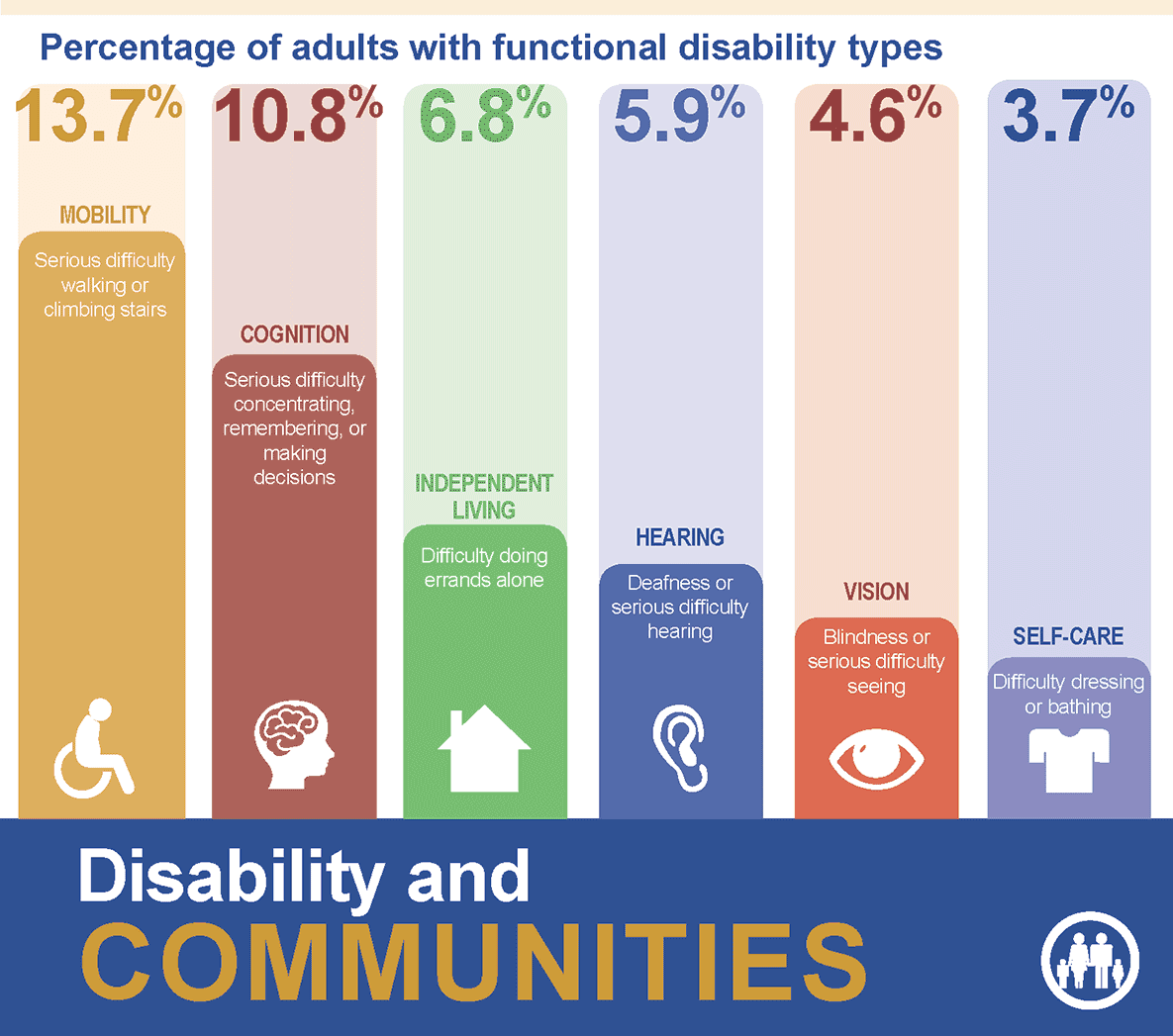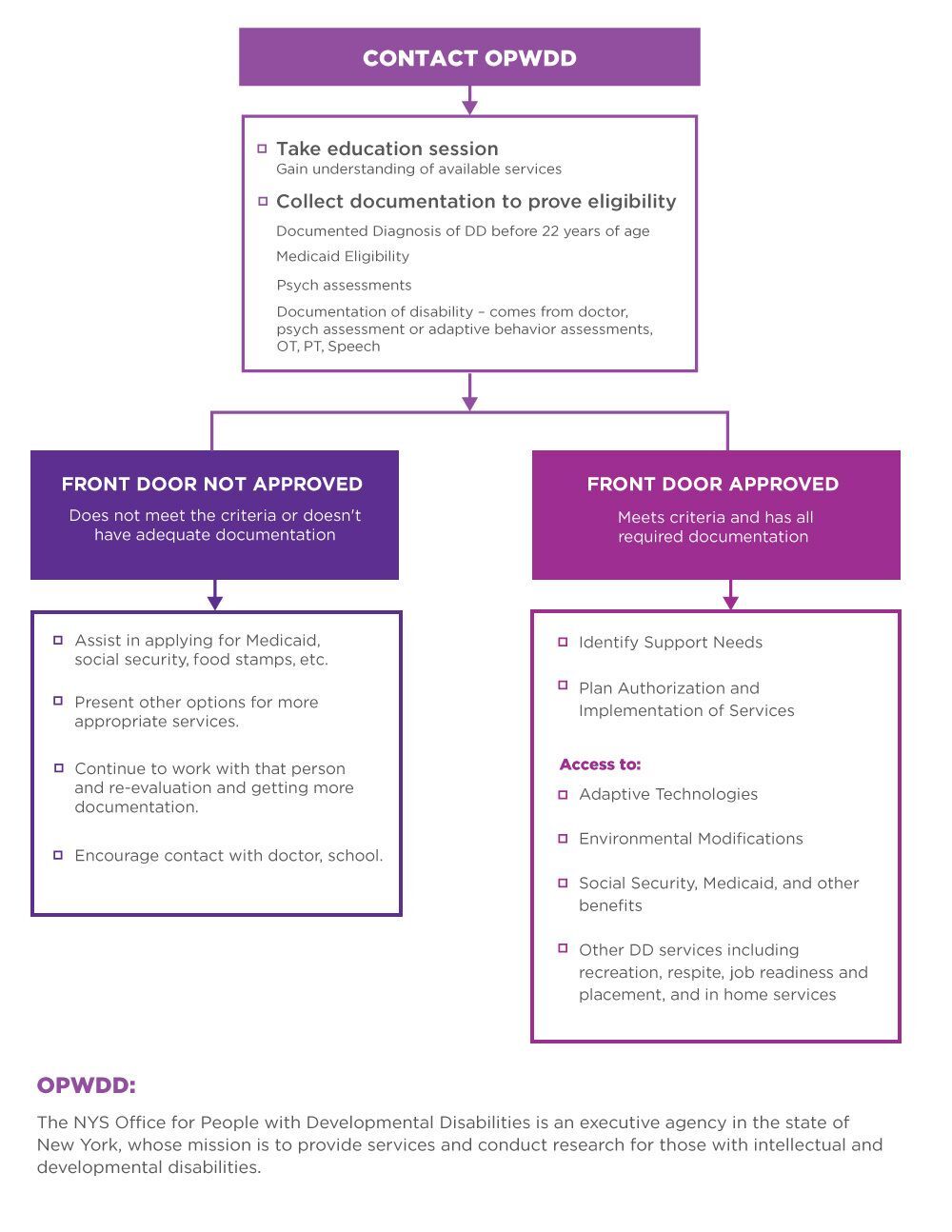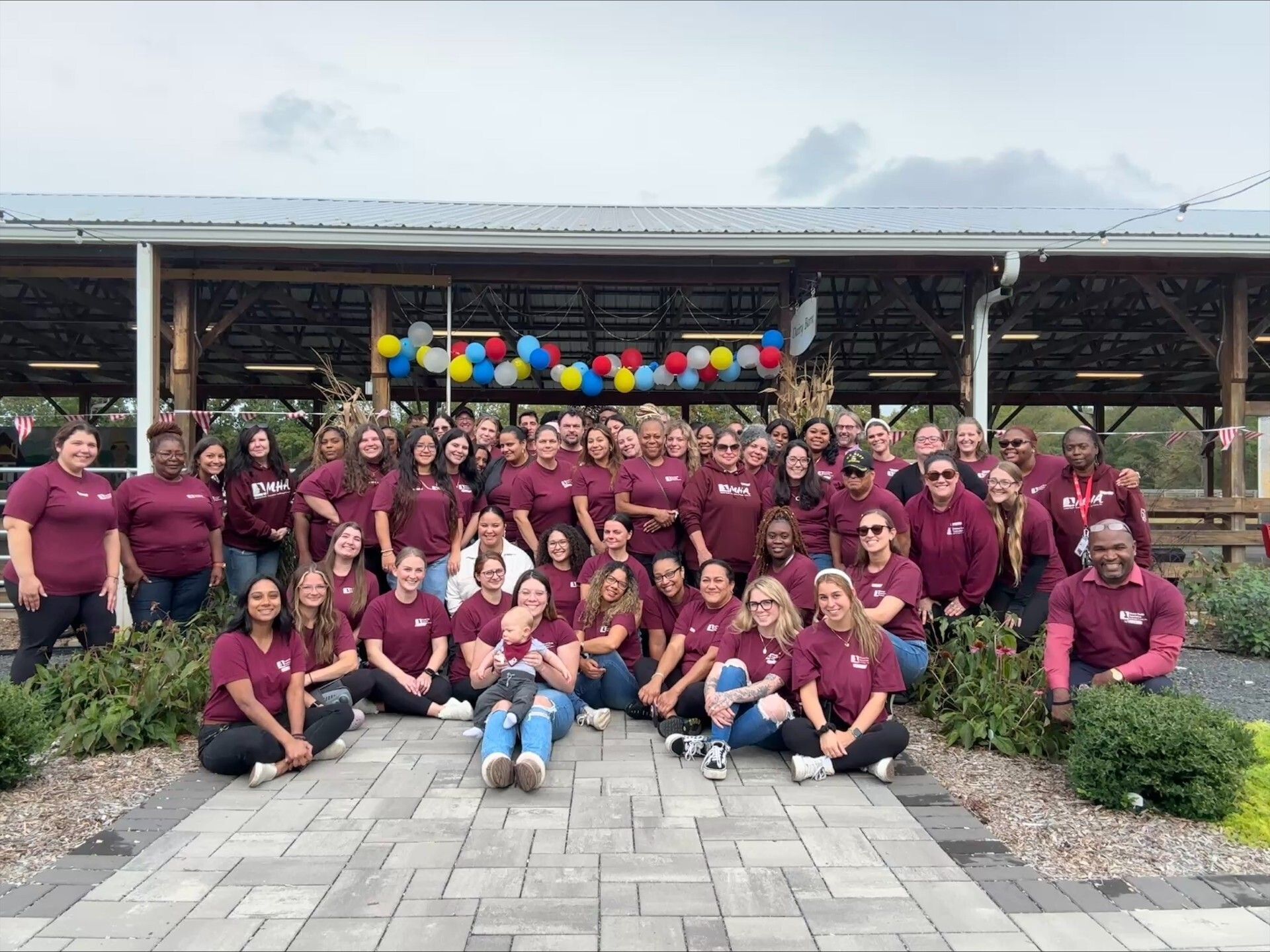
Developmental Disabilities
Developmental disabilities are a group of conditions due to an impairment in physical, learning, language, or behavior areas. These conditions begin during the developmental period, may impact day-to-day functioning, and usually last throughout a person’s lifetime.
Milestones
Skills such as taking a first step, smiling for the first time, and waving “bye-bye” are called developmental milestones. Children reach milestones in how they play, learn, speak, behave, and move (for example, crawling and walking).
Children develop at their own pace, so it is impossible to tell exactly when a child will learn a given skill. However, the developmental milestones give a general idea of the changes to expect as a child gets older.
As a parent, you know your child best. If your child is not meeting the milestones for his or her age, or if you think there could be a problem with your child’s development, talk with your child’s doctor or health care provider and share your concerns. Do not wait.
Milestones children should reach »
Developmental Monitoring and Screening
A child’s growth and development are followed through a partnership between parents and health care professionals. At each well-child visit, the doctor looks for developmental delays or problems and talks with the parents about any concerns the parents might have. This is called developmental monitoring.
Any problems noticed during developmental monitoring should be followed up with developmental screening. Developmental screening is a short test to tell if a child is learning basic skills when he or she should, or if there are delays.
If a child has a developmental delay, it is important to get help as soon as possible. Early identification and intervention can have a significant impact on a child’s ability to learn new skills, as well as reduce the need for costly interventions over time.
Developmental monitoring and screening »
Causes and Risk Factors
Developmental disabilities begin anytime during the developmental period and usually last throughout a person’s lifetime. Most developmental disabilities begin before a baby is born, but some can happen after birth because of injury, infection, or other factors.
Most developmental disabilities are thought to be caused by a complex mix of factors. These factors include genetics; parental health and behaviors (such as smoking and drinking) during pregnancy; complications during birth; infections the mother might have during pregnancy or the baby might have very early in life; and exposure of the mother or child to high levels of environmental toxins, such as lead. For some developmental disabilities, such as fetal alcohol syndrome, which is caused by drinking alcohol during pregnancy, we know the cause. But for most, we do not.
Following are some examples of what we know about specific developmental disabilities:
- At least 25% of hearing loss among babies is due to maternal infections during pregnancy, such as cytomegalovirus (CMV) infection; complications after birth; and head trauma.
- Some of the most commonly known causes of intellectual disability include fetal alcohol syndrome; genetic and chromosomal conditions, such as Down syndrome and fragile X syndrome; and certain infections during pregnancy.
- Children who have a sibling with autism are at a higher risk of also having autism spectrum disorder.
- Low birthweight, premature birth, multiple birth, and infections during pregnancy are associated with an increased risk for many developmental disabilities.
- Untreated newborn jaundice (high levels of bilirubin in the blood during the first few days after birth) can cause a type of brain damage known as kernicterus. Children with kernicterus are more likely to have cerebral palsy, hearing and vision problems, and problems with their teeth. Early detection and treatment of newborn jaundice can prevent kernicterus.
- The Study to Explore Early Development (SEED) is a multiyear study funded by CDC. It is currently the largest study in the United States to help identify factors that may put children at risk for autism spectrum disorders and other developmental disabilities.
Who Is Affected
Developmental disabilities occur among all racial, ethnic, and socioeconomic groups. Recent estimates in the United States show that about one in six, or about 15%, of children aged 3 through 17 years have a one or more developmental disabilities, such as:
- ADHD
- Autism Spectrum Disorder
- Cerebral Palsy
- Hearing Loss
- Intellectual Disability
- Learning Disability
- Vision Impairment
- Other developmental delays.
Learn more about the number of children in the U.S. with developmental disabilities
For over a decade, CDC’s Autism and Developmental Disabilities Monitoring (ADDM) Network has been tracking the number and characteristics of children with autism spectrum disorder, cerebral palsy, and intellectual disability in several diverse communities throughout the United States.
CDC’s tracking of the number and characteristics of children with autism spectrum disorder
CDC’s tracking of the number and characteristics of children with cerebral palsy
Living With a Developmental Disability
Children and adults with disabilities need health care and health programs for the same reasons anyone else does—to stay well, active, and a part of the community.
Having a disability does not mean a person is not healthy or that he or she cannot be healthy. Being healthy means the same thing for all of us—getting and staying well so we can lead full, active lives. That includes having the tools and information to make healthy choices and knowing how to prevent illness. Some health conditions, such as asthma, gastrointestinal symptoms, eczema and skin allergies, and migraine headaches, have been found to be more common among children with developmental disabilities. Thus, it is especially important for children with developmental disabilities to see a health care provider regularly.
Learn more about healthy living
CDC does not study education or treatment programs for people with developmental disabilities, nor does it provide direct services to people with developmental disabilities or to their families. However, CDC has put together a list of resources for people affected by developmental disabilities.
List of developmental disabilities resources

Office for People with Disabilities (OPWDD) How to Determine Eligibility for Services
The first step to getting assistance is to determine if you are eligible for services and supports.
Eligibility Review Process
The eligibility review process is the way OPWDD determines if you have a developmental disability or are eligible for supports and services. The process begins at one of OPWDD's five Developmental Disability Regional Offices (DDROs) located throughout New York State. You and your family will need to submit materials and records, such as reports of assessments conducted by medical professionals. Your care manager may help you through this process. The information you submit will be reviewed to see if your disability meets the requirements specified in New York State law. If it meets the requirements, you are deemed eligible for OPWDD services. (Please note additional steps, such as enrolling in Medicaid, are needed to gain access to most supports and services.) Depending on the complexity of your condition, the process for obtaining an eligibility determination may require reports from multiple specialty assessments. A face-to-face interview may also be part of the process.
Three-Step Eligibility Review
The process for determining eligibility may involve multiple review steps and is designed to make sure that every person receives a fair and thorough review.
1st-Step Review
OPWDD staff review the eligibility request to make sure it is complete. After this first review, the regional office notifies you in writing that:
(a) Eligibility or Provisional Eligibility has been confirmed; or (b) The request is incomplete and requires additional documentation; or (c) The request is being forwarded for a 2nd-Step Review
2nd-Step Review
If your eligibility request is forwarded for a 2nd-step review, a committee of clinicians will evaluate the materials in your request file, and any additional information that you provide.
When the 2nd-step review is complete, the regional office will send you a written notice of the determination (also called a notice of decision or NOD). If the committee determines that you do have a developmental disability, you are eligible for OPWDD services. If you are found to be ineligible, you will be able to schedule a meeting with staff to discuss that decision and to request a third step review. You can also request a Medicaid Fair Hearing at this point if you are seeking Medicaid-funded services. If a Fair Hearing is requested, a 3rd-Step Review will happen automatically.
*Please note that a Notice of Decision offering a Fair Hearing is sent only if the person has requested Medicaid-funded services on the Transmittal for Determination of Developmental Disability Form.
3rd-Step Review
Third-step reviews are done by an independent Eligibility Review Committee of licensed practitioners not involved in the first- and second-step reviews. The committee reviews the eligibility request and provides recommendations to the second step review coordinator. The third-step recommendations are considered by the OPWDD Regional Office director (or designee), and the person is informed of the results, including any changes in the determination.
Third-step reviews are completed before the Fair Hearing date.
Required Documents for Eligibility Determination
The following information is needed to determine if a person is eligible for OPWDD services:
- A psychological report which includes an assessment of intellectual functioning (“IQ test”). This report should include all summary scores from the assessment (Full Scale, Index, Part and Subtest scores).
- For people with IQ scores above 60, an interpretive report of a standardized assessment of adaptive behavior, including summary, composite, scale, and domain scores, is required.
- For people with IQ scores below 60, an adaptive assessment may be based on an interpretive report using information gathered from interviews with caregivers, records review, and direct observations.
- For young children, an Early Intervention Multidisciplinary Core Evaluation may be acceptable provided it includes standardized test scores relevant to cognitive, language and communicative, adaptive, social and motor functioning.
- For conditions other than intellectual disability, a medical or specialty report that includes health status and diagnostic findings to support the diagnosis. If available, a recent general medical report should be included in all eligibility requests.
- A social/developmental history, psychosocial report or other report that shows that the person became disabled before age 22. This is required for all eligibility requests.
- In some cases, additional information or further evaluation may be requested to determine eligibility. We recommend that you work with the Eligibility Coordinator at your local OPWDD regional office to ensure that you have submitted a complete eligibility packet when requesting an eligibility determination.
Diagnostic Evaluation
The most critical component to determining eligibility is the diagnostic evaluation. A diagnostic evaluation is done to determine the nature and significance of your developmental disability (i.e., your diagnosis.)
Acceptable Measures of Intellectual Functioning:
- The Wechsler series of intelligence scales
- The Stanford-Binet Scales
- Leiter International Performance Scale
- The Kaufman series of intelligence scales
- Considerations for Measures of Intellectual Functioning:
- Brief or partial administration of comprehensive intellectual measures may only be used in circumstances where standardized administration is impossible.
- Abbreviated measures of intelligence (WASI, K-BIT) are not acceptable as the only measure of intellectual functioning.
- Language-free instruments (Leiter, CTONI) in combination with the Performance items of a comprehensive IQ test will be considered for individuals who do not speak English, are deaf, or are non-verbal
- Intelligence tests standardized in English cannot be administered in a different language and then be used for eligibility determinations
- Acceptable Measures of Adaptive Behavior
- Adaptive Behavior Assessment System
- Vineland Adaptive Behavior Scales
- The Motor Skills Domain only of the Scales of Independent Behavior
Other intelligence tests and/or adaptive behavior measures are acceptable if they are comprehensive, structured, standardized and have up-to-date general population norms. Results from a measurement that is not on this list, but was given prior to the person reaching age 22, can be used to establish a history of adaptive deficits during the developmental period. Adaptive behavior measure ratings should reflect the person’s actual, typical behavior, not their best behavior under ideal circumstances or with assistance.
Please note it is expected that current/updated evaluations of intellectual or adaptive functioning are based on the most recent editions of the standardized instrument used.
The Assessment Process
Once your eligibility to receive OPWDD services has been determined, you will start the assessment process. The purpose of the assessment is to identify your current strengths and needs and the natural or community supports you have or can get. This information is used to plan for services you need and to develop your person-centered plan.
What is Person-Centered Planning?
Person-Centered Planning is the way you and your Care Manager explore your needs and wants---what is important to you, how you want to live, and how OPWDD can provide the support to help you get there. The Person-Centered Planning process is directed by you and the people important to you, usually including your family members. The focus is on your abilities, capacities, interests and what you are looking for in your life. By providing supports and services planned around your needs and goals, OPWDD can help you reach your potential and live a fulfilling life. Focus on Outcomes! The results of the planning and services provided—the outcomes—are what really matter. Outcomes are not goals but tell us whether a person’s goals are being achieved. The planning and supports provided should work for you and your family. To find out if they do, we look at the results and ask questions like:
- Are you connected to activities that are important to you?
- Are the supports helping you develop and maintain relationships that are important to you? Do you feel safe and stable?
- Developing a plan for your supports and services is only the first step.
OPWDD Supports and Services Include:
- Help to live independently in the community with rent subsidies, community habilitation and other services.
- Help for your family to support you in the family home with respite and family support services.
- Help with employment training and support, volunteer opportunities and other types of community activities you choose, and
- Intensive residential and day services, if needed.

